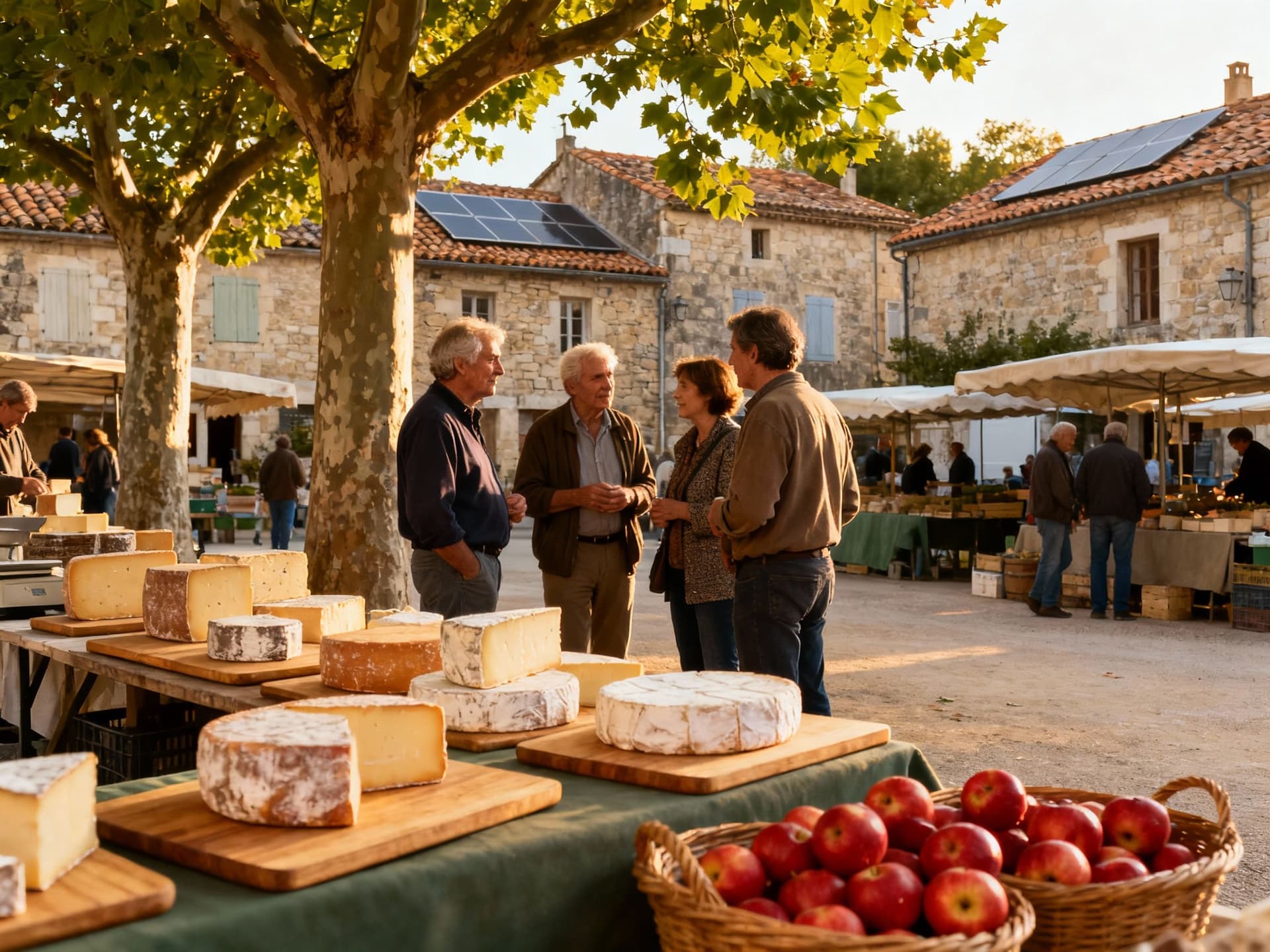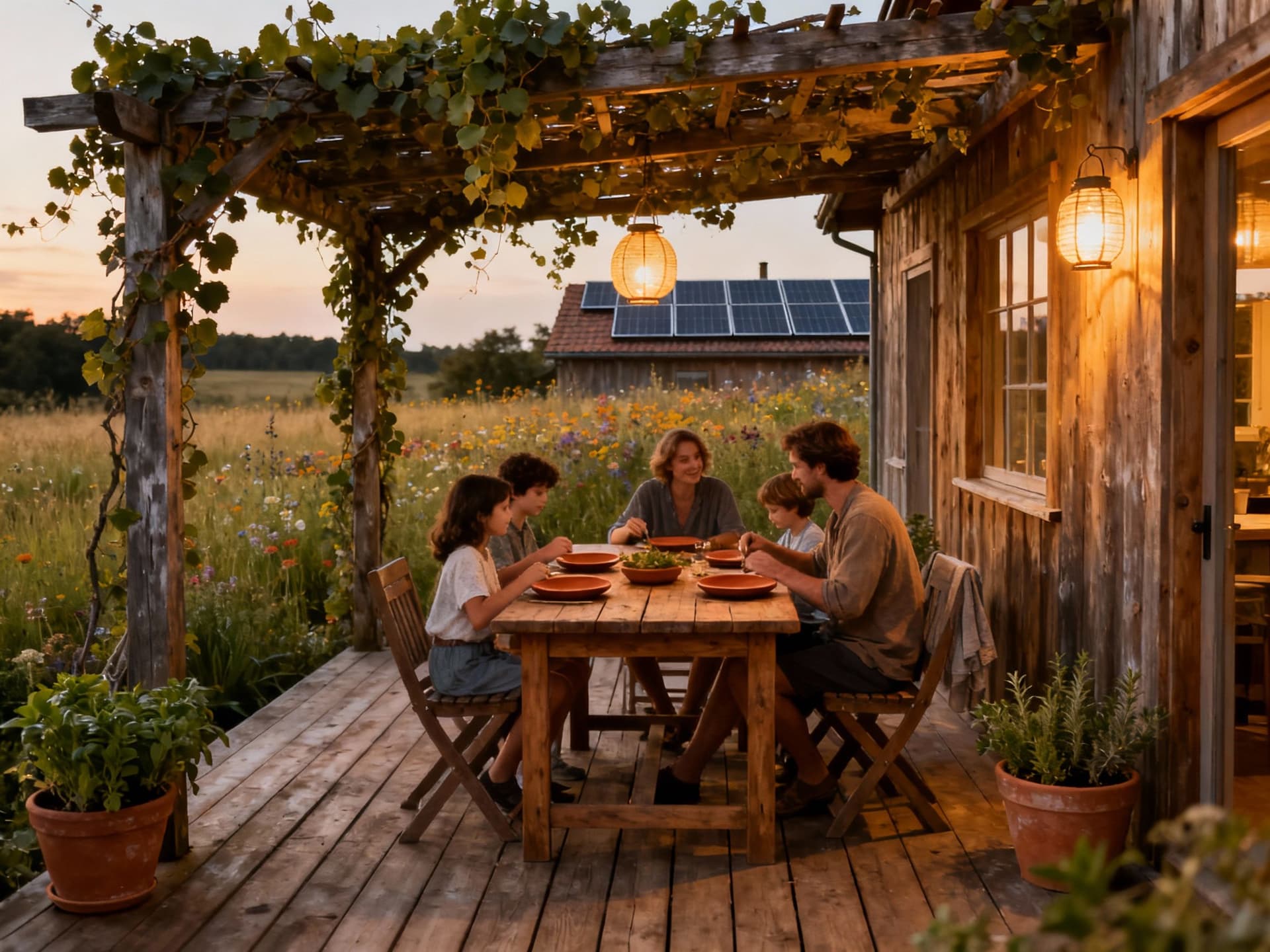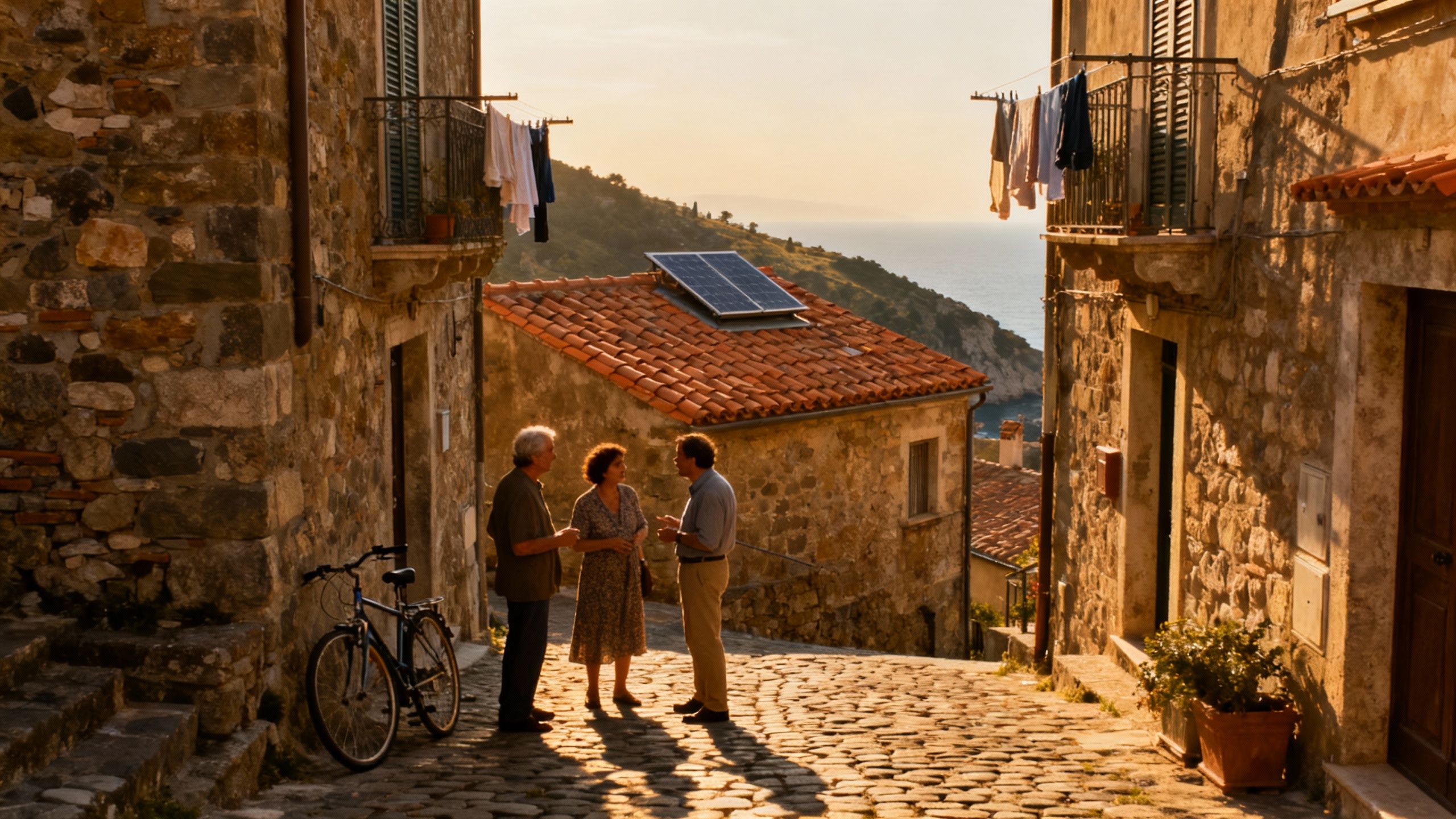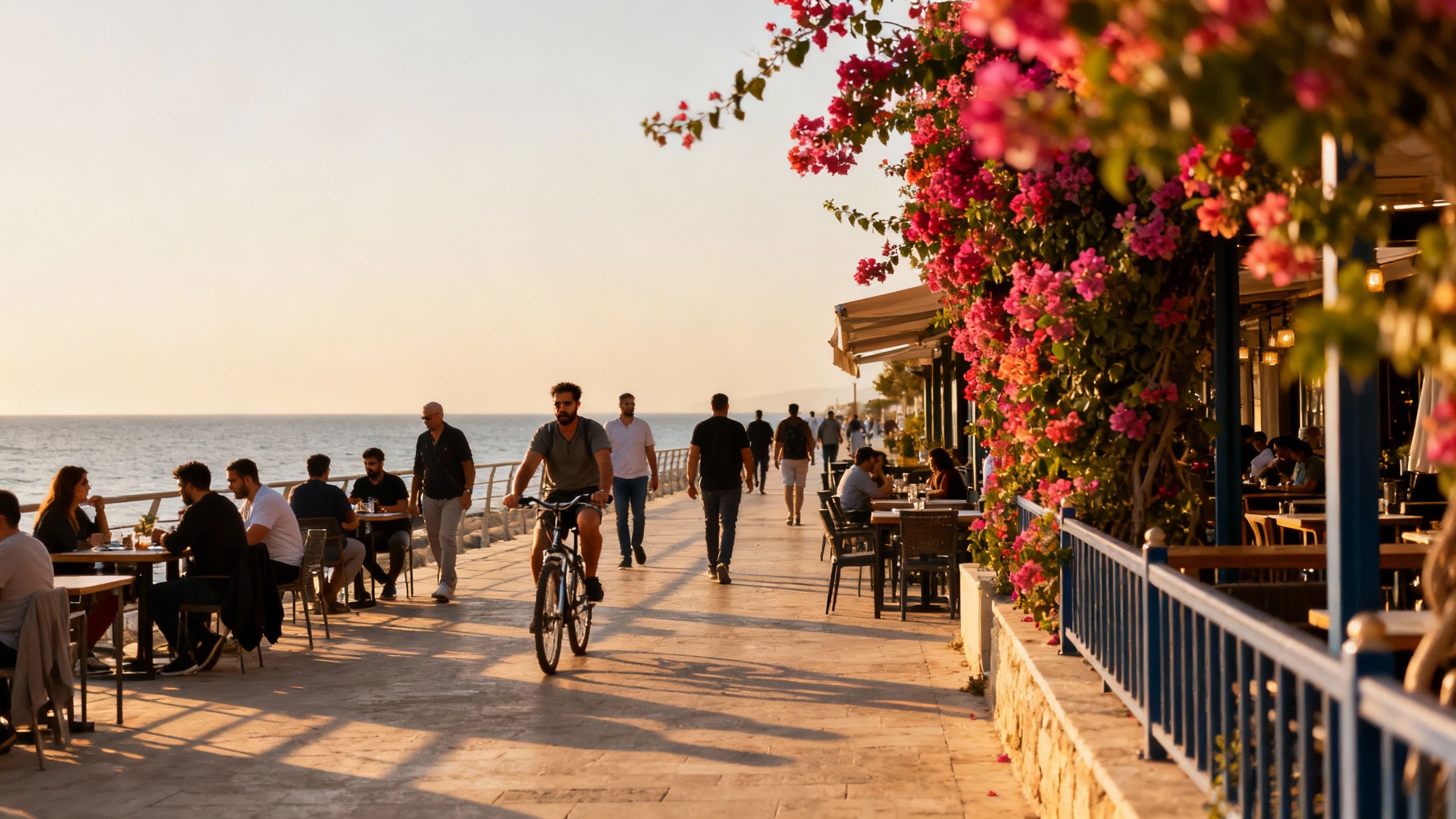Why France’s Green Villages Outlive Riviera Hype
Green‑infrastructure regions in France blend lifestyle and resilience — provincial prices are rebounding, but the smartest buyers value community renewables and long‑term stewardship.
Imagine waking to goats grazing beneath a ridge of solar panels, strolling to a village market for chèvre and sourdough, then pausing at a cafe where the conversation drifts from the latest local council wind‑project to next week’s farmers’ night. That gentle, engineered blend of old‑world rhythm and modern green infrastructure is quietly reshaping parts of France — and for many international buyers it changes the equation: lifestyle, resilience and long‑term value, not just seaside glamour. According to recent market analysis, regional price rebounds and growth in provincial markets mean green villages are worth a second look.
Living the French green lifestyle

France is more than Parisian cafes and Mediterranean villas. In places like Brittany’s coastal communes, rural Occitanie, and parts of Nouvelle‑Aquitaine, daily life is stitched to seasons and landscape: morning markets, communal bread ovens, timber‑framed homes tempered by solar pergolas and rain gardens. The air smells of wood smoke and wet earth in November, lavender and hay in July. Here, houses often come with small orchards, community compost areas, and neighbors who trade eggs and practical advice on air‑source heat pumps.
Village spotlight: Saumur to the Loire’s renewable outskirts
Walk the lanes around Saumur and you’ll find old stone cottages with tiled roofs, many upgraded discreetly with photovoltaic tiles and greywater systems. Local markets brim with Loire Valley goat cheeses and walnut oil; cycle lanes thread vineyards and community woodlots. For buyers, these towns offer the intimacy of small‑town France with surprising access to renewable projects and energy cooperatives that lower communal bills and foster local stewardship.
Food, festivals and the rhythm of seasons
In spring you’ll join villagers harvesting wild asparagus; in autumn you’re at a fête celebrating chestnuts and timber crafts. The food scene is small‑scale and proudly local: markets in Biarritz and Bayonne mingle Basque produce with emerging eco‑food co‑ops; inland, weekly marchés focus on hyper‑seasonal produce and artisanal sourdough. These rituals shape how you live — smaller pantry footprints, seasonal menus, and a home garden that becomes both hobby and food security.
Morning routines at local cafes: Café du Commerce (Arcachon), Café des Arts (Lourdes), and market breakfasts in Albi.
Markets and food hubs: weekly marché days, cooperative food stores, seasonal truffle and chestnut fairs.
Outdoor life: coastal walks in Brittany, river swims on the Loire, community orchards and wildflower meadows.
Making the move: lifestyle meets real estate reality

Dreams of green living are buoyed by recent data: INSEE and notaries report renewed upward movement in provincial prices in early 2025, reversing a period of stagnation. That matters for buyers because green‑infrastructure regions are often on the map for strategic local investment — lower energy costs, expanding community renewables, and improving connectivity. But lifestyle value doesn’t automatically equal straightforward buying; local regulations, heritage protections and renovation realities shape what a green home actually costs to own and maintain.
Property styles that fit an eco life
Stone farmhouses with thick walls and south‑facing courtyards lend themselves to passive solar upgrades. Timber cottages respond well to added insulation and heat‑pump retrofits. Newer eco‑hamlets and renovated barns often already feature solar, battery storage and rainwater capture — but factor in landscape‑sensitive drainage and biodiversity measures when comparing offers. A home’s footprint (garden, hedgerows, ponds) can be as valuable as internal square metres for those seeking regenerative living.
How local experts bridge dream and deed
Work with an agent who understands both sustainability features and local planning: 1) ask for EPC (Diagnostic de Performance Énergétique) histories and renovation permits; 2) request details on community energy projects or intercommunal waste/water schemes; 3) check heritage restrictions (AVAP/Monuments historiques) that affect external changes; 4) compare long‑term operating costs not just purchase price — recent INSEE data shows provincial prices rising, but running costs differentiate green homes.
Insider knowledge: the things expats learn slowly
Expats tell the same story: the places that felt most sustainable weren’t always the most expensive; they were the ones with active communities, local co‑ops and pragmatic infrastructure investments. That social glue — volunteer green committees, shared workshops, and village energy cooperatives — often determines how well a property ages and how joyful life becomes. Expect a seasonality to social life: some villages nap in January and hum in July.
Cultural rhythms, community and language
Learning a few phrases, joining the boulodrome on Sundays, and helping at the marché are more effective than formal networking. Local councils (mairies) are vital partners — they approve small renewables and rural renovations and often know of off‑market plots. For buyers, patience and presence pay: attend a council meeting or a harvest festival before making an offer to sense how community stewardship works in practice.
Long‑term living: maintenance, succession and stewardship
Think in decades. Energy costs may fall relative to peers if you invest in insulation and on‑site renewables; conversely, heritage constraints can make sympathetic renovations costly. Discuss inheritance and succession practices early if you plan generational stewardship — rural French property traditions and tax realities are specific and best handled with local legal counsel. Small moves — planting native hedgerows, keeping a rainwater tank — pay ecological and financial dividends over time.
Red flags to watch for in green‑branded listings: missing energy diagnostics, vague claims about ‘off‑grid’ status, lack of permits for added PV, or water rights that aren’t transferred with the property.
Positive signs: documented EPC improvements, evidence of local energy cooperatives, recent soil or biodiversity assessments, and neighbours who actively maintain communal resources.
A simple buying checklist: 1) request EPC and permit history; 2) speak to the mairie about local renewable plans; 3) verify water and drainage rights; 4) budget for landscape‑sensitive renovations; 5) join local online groups to learn the social heartbeat before committing.
Conclusion: France’s green villages offer a quietly radical proposition — slower rhythms, lower ecological footprints and community resilience that often outperforms headline glamour. Market indicators show provincial strength, but the best moves are local: spend an extra market morning, ask for the EPCs, walk hedgerows at dusk and work with an agent who understands both ecological features and French planning realities. If you want a home that lives as part of the landscape, start with a conversation — and a walk — in the village you imagine calling home.
Danish relocation specialist who moved from Copenhagen to the Algarve; supports families with seamless transitions, local partnerships, and mindful purchases.


